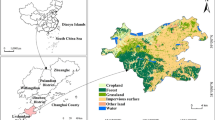Abstract
The city plan of 1921 conducted by the British Sir MacLean was the first scheme of Alexandria in the modern age (Egypt). Applying the network planning basics, the scheme had created an ideal thermal environment for the coastal city; the perpendicular streets on the coast, main axes parallel to the sea and the availability of inner water surfaces, all have played a major role for providing thermal comfort to the deepest point of the city’s south borders in a successful form of cross natural ventilation effect on the urban level. Many changes have taken place on MacLean scheme during the past 90 years, most notable changes were the replacement of the water body (Lake Hadara) with a classy residential area (Smouha) along with significant shrinkage in Lake Mariout surface, accompanied with a huge informal housing expansion to the south, west and east of the city. Gated communities and the governmental affordable housing projects were also some of the major changes in the city. Surprisingly, among the changes of the city shape, only the informal housing expansion came out just like the old layout attributes of MacLean’s scheme with its environmental benefits. This paper is an investigative analytical comparison study depending on fieldwork where the collected air quality numerical measurements (i.e., CO, CO2, relative humidity and particles matter) in the selected test area came out within the global standards. The wind characteristics have been analyzed to assess the real effect of the urban natural ventilation in Alexandria. The study argues that the network planning invented by the early builders of Alexandria and had been applied involuntary in the informal areas has turned to be the preferred layout. This provides a sort of ecological balance along with economic benefits by applying the urban natural ventilation concept, and therefore, better living conditions were provided and the air pollutants’ proliferation has been reduced.




Similar content being viewed by others
Notes
Ezzab -the plural of Ezba-: The local name of the informal housing around Smouha district.
A Toktok is a three-wheeled motor vehicle very popular in Asian countries, often used as a taxi and works with natural gas.
References
Wikipedia (2016) Ventilation (architecture). https://en.wikipedia.org/wiki/Ventilation_(architecture)#Natural_ventilation. Accessed 25 Sept 2016
Niachou K, Santamouris M, Georgakis C (2007) Technical Note AIVC 61: natural and hybrid ventilation in the urban environment. Annex V Air Infiltration and Ventilation Centre, IEA Energy Conservation in Buildings and Community Systems Programme. pp 1–10
Oleshevych A (2015) What really determines quality of life?. Athens dialogues E-Journal. http://athensdialogues.chs.harvard.edu/cgibin/WebObjects/athensdialogues.woa/wa/dist?dis=92. Accessed 31 Aug 2016
Eurostat Statistics Explained (2013) Quality of life indicators natural and living environment. http://ec.europa.eu/eurostat/statistics explained/index.php/Quality_of_life_indicators_-_natural_and_living_environment. Accessed 25 Aug 2016
Ghiaus C, Allard F, Santamouris M, Georgakis C, Roulet CA, Germano M, Tillenkamp F, Heijmans N, Nicol F, Maldonado E, Almeida M, Guarracino G, Roche L (2005) Natural ventilation of urban buildings—summary of URBVENT project. In: Proceedings of the 1st International Conference on passive and low energy cooling for the built environment: PALENC 2005, Santorini, Greece. vol. 1, pp 29–33, 19–21 May 2005
Ogden S (2016) The environment: temperature, relative humidity, light, and air quality: basic guidelines for preservation. NorthEast Document Conservation Center. https://www.nedcc.org/free-resources/preservation-leaflets/2.-the-environment/2.1-temperature,-relative-humidity,-light,-and-air-quality-basic-guidelines-for-preservation. Accessed 28 Aug 2016
Department of Health and Human Services, (CDC) Centers for Disease Control and Prevention (2005) Carbon Monoxide Poisoning. https://www.cdc.gov/co/ar/pdfs/faqs.pdf. Accessed 24 Aug 2016
ASHRAE, 2013, ASHRAE Standard 55-2013, Standard 55-2013 Thermal environmental conditions for human occupancy, American Society of heating, refrigerating, and air-conditioning engineers, ANSI approved
WHO (2006) WHO Air quality guidelines for particulate matter, ozone, nitrogen dioxide and sulfur dioxide, Global update 2005, World Health Organization, WHO Press
Atkinson J, Chartier Y, Pessoa-Silva CL, Jensen P, Li Y, Seto WH (2009) Natural ventilation for infection control in health-care settings. WHO Publication/Guidelines. pp 7–10
NC State University (2013) Carbon Dioxide. http://climate.ncsu.edu/edu/k12/.carbondioxide. Accessed 30 Aug 2016
Author information
Authors and Affiliations
Corresponding author
Additional information
This paper was selected from GeoMEast 2017—Sustainable Civil Infrastructures: Innovative Infrastructure Geotechnology.
Rights and permissions
About this article
Cite this article
Shalaby, H.M., Sherif, A. & Altan, H. The impact of the informal area expansion on the urban natural ventilation of Alexandria. Innov. Infrastruct. Solut. 3, 8 (2018). https://doi.org/10.1007/s41062-017-0109-0
Received:
Accepted:
Published:
DOI: https://doi.org/10.1007/s41062-017-0109-0




